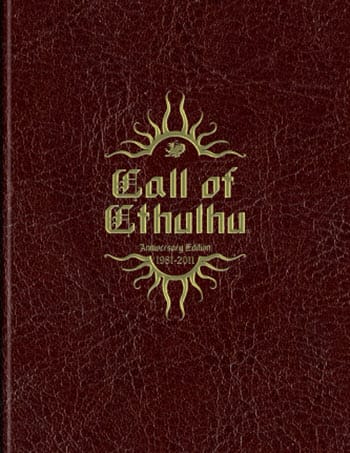
This may make you feel old, but 2011 is the 30th anniversary of Call of Cthulhu.
Zip back in time to 1981. Sandy Petersen – he of Doom fame, yeah; the computer game – pitched a concept to the RPG publisher Chaosium that made use of Lovecraft’s Dreamlands setting. The original game, Dark Worlds, was commissioned but never actually published. While working for Chaosium, Peterson took control of the Call of Cthulhu project.
Lynn Willis took over from Peterson and has been credited as a co-author since 1992, when the 5th edition came out.
The d20 version of Call of Cthulhu was published in 2001, the 6th edition came out in 2004, the 25th anniversary edition came out in 2006, Pelgrane Press’s Trail of Cthulhu (a stand-alone game) came out in 2008, and just this month Chaosium has announced a 30th Anniversary Collector’s Edition.
The 30th anniversary collector’s edition will be a 320-page book, 3 mm leatherette hard-covers, a spine stamped with gold foil, a black ink interior that uses 90 gms matte art paper and the binding will be thread sewn. This is a hefty book and a one-time printing.
Call of Cthulhu was groundbreaking in a number of ways, and not just because it assumed the PCs would fail – either dying or going insane. Wikipedia suggests it was Petersen who first introduced the “Onion Skin” concept to RPGs. In other words, starting off on the outside of the onion, with something like a simple murder mystery or theft, then peeling away the layers until reaching the rotten core and dreadful revelations.
In the very first Call of Cthulhu adventure – Shadows of Yog-Sothoth – the “onion skin” technique to take players through a series of clues to a world-threatening situation.


